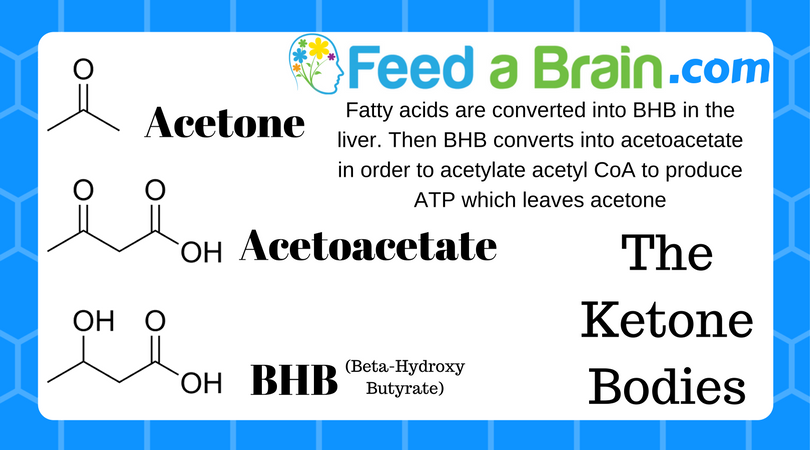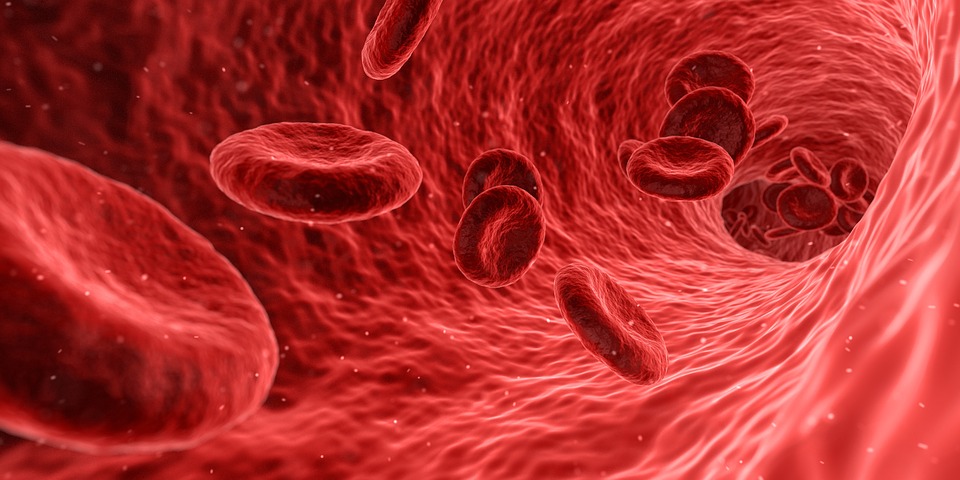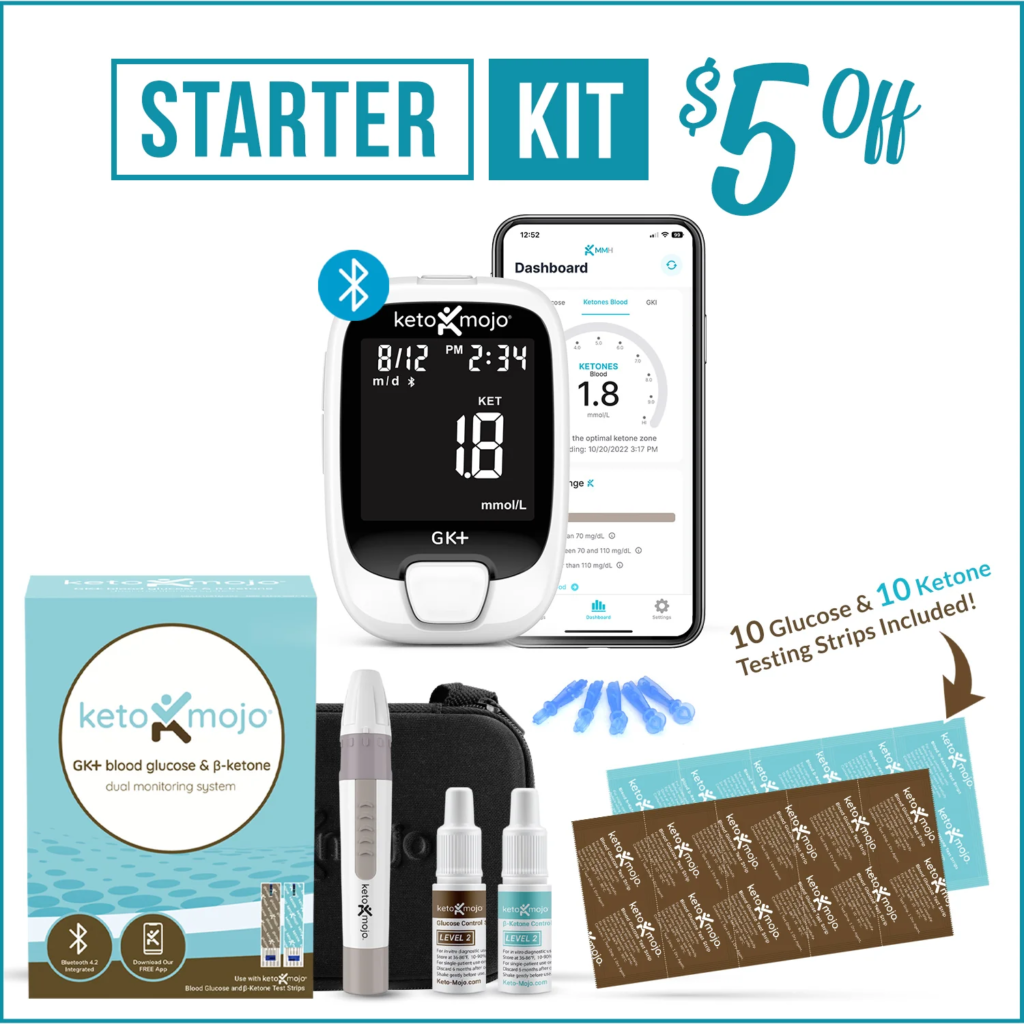Ketogenic Metabolism Benefits
Just here for exogenous ketones?
Click here to see Exogenous Ketone Products that I like.
What is Ketosis, and What is a Ketogenic Diet?
We hear the word “keto” thrown around a lot nowadays in the health and fitness world, and not everyone fully understands what it means. When most people say “I’m doing keto”, they mean they are on a ketogenic diet.
Ketogenic simply means “creating ketones”. You might be wondering what a ketone is. When we eat carbohydrates and sugars, our bodies convert these nutrients into glucose or other simple sugars to power our cells via the creation of ATP (adenosine triphosphate).
Check out our Full Article on ATP to learn more.
How Does Our Body Make Endogenous Ketones?
To put it simply, ATP is like a little battery that stores energy, and our cells use these batteries to power just about every reaction in every cell of our bodies. However, our bodies can use fats to power our cells as well. When we eat fats or fatty acids, our liver converts these into ketones.
Our cells cannot utilize fat right off the bat, but they can use ketones to create ATP after our liver has converted it.

A ketogenic diet is typically described as a high fat, moderate protein, and low carbohydrate diet.
The Atkins Diet is usually the first thing that pops into people’s heads when they think “low carb diet”, and while Dr. Atkins popularized the diet in modern times, the ketogenic diet has been around for a very long time.
The History of the Ketogenic Diet
Many people believe so called “low carb diets” are just another fad diet, but we have been studying the ketogenic diet in the United States as far back as the 1920’s for its use in suppressing drug-resistant seizures!
I suppose you could say the very first known therapeutic use of ketosis for seizures goes back to Ancient Greece. People who had seizures were thought to be possessed by demons.
The possessed were locked away in a room with no food or water. This type of fasting would create a rapid onset of ketosis and this rid them of their seizures.

The Charlie Foundation
In cases where drugs and other therapies fail to prevent seizures, the ketogenic diet seems to be the best thing for them. Organizations like The Charlie Foundation help promote awareness of this life-saving technique for preventing seizures.
Charlie Abrams is the son of famous Hollywood producer Jim Abrams, and his seizures were so severe and frequent that they were impeding his development.
The Only Thing That Worked
After trying hundreds of thousands of dollars in allopathic, and alternative therapies, the ketogenic diet seemed to be the only thing that made any noticeable impact.
Charlie is now a healthy seizure free adult even though he is no longer on the ketogenic diet. There seems to be a lasting healing effect on the body from even doing a ketogenic diet temporarily.
Meryl Streep talks about the benefits she has seen in Charlie since the ketogenic diet in this four minute 1994 Charlie Foundation Video.
The Modern Study of Fasting and Ketosis:
Dr. Cahill of Yale, who extensively researched the benefits of fasting, believes that most if not all of the benefits of fasting can be traced back to ketones like beta-hydroxybutyrate (BHB).
When we eat fats like coconut oil, and grass-fed butter our bodies convert the fatty acids into BHB, acetoacetic acid, and acetone. Most people know acetone as the industrial cleaner used as nail polish remover.
It cannot easily be converted into fuel for the cells so most of it is excreted through the urine or the lungs. This is where the token “sweet breath” comes from when people are on a ketogenic diet.
Behold BHB and Exogenous Ketones
The main ketone you will hear about supplementally is BHB. This is because it is easily converted into acetoacetic acid (sometimes called acetoacetate), and this compound can readily be converted into ATP in our cells.
Acetoacetic acid is is very unstable so BHB is the go to ketone that our body makes, and it is also the go to supplement for exogenous ketones.
Exogenous ketones have already been converted into BHB so they are able to go right into our cells to made into energy in the form of ATP.
The Two Current Categories of Exogenous Ketones
There are two main categories of exogenous ketones: ketone esters, and ketone salts. Ketone esters are very effective, and they used to not be available for commercial production and consumption until now.
HVMN is a company that just created a commercially available ketone ester, and is beginning to research the effects of ketone esters on athletes, and for other therapeutic uses. Their video sparked a revolution of over 30k hits in under 2 weeks.
HVMN Ketone: A Revolution in Nutrition
The CEO, Geoffrey Woo, was also the CEO of Nootrobox which is a company that sells natural nootropic stacks including tablets and even chewable coffee-flavored, caffeinated nootropic stack. Keep that in mind as exogenous ketones may be the most important nootropic of all.
Read our Full Article on Nootropics also known as “smart drugs” and “smart supplements” here.
What’s The Difference Between Esters and Salts?
Ketones salts are not as effective as ketone esters at raising blood levels of ketones, but they do have a therapeutic effect according the clinical studies. These are most often salt forms of BHB like sodium BHB or potassium BHB.
These are much more widely available, and are available for sale. BHB can also be combined to amino acids like glycine, but there are no products on the market with these yet.
Click here to see some Exogenous Ketone Salt Products that I like a lot. Ketone salts are much more affordable than esters.
(Use coupon code: “FEEDABRAIN” for a discount).
In the video below Ketone Esters reduce post-pranadial glucose levels more aggressively than the pharmaceutical drug Metformin. Ketone esters could have far reaching impacts for the natural management of diabetes in the future
Who Could Benefit from Using Exogenous Ketones?
Another perk of using ketone salts, and ketone esters is that they make the transition into a ketogenic metabolism much easier and smoother.
Some people experience what people call the “keto flu” when they are transitioning into a ketogenic diet for a variety of reasons.
The primary reason is that when we are switching our primary fuel from carbohydrates to fats, it takes our bodies, specifically our livers, some time to get used to producing the right enzymes (lipase) to digest that much fat.
In the interim period, you may feel tired or weak because you are not getting enough calories to your cells.

How Could I Benefit from Exogenous Ketone Supplementation?
The BHB that gets into your blood from these ketone salts can take off a lot of that strain because our liver does not need to convert them. This means that you have a fuel source for ATP even when you are fasting.
People experimenting with therapeutic ketogenic diets, and with intermittent fasting could greatly benefit from exogenous ketone supplementation because they could augment their metabolism in a way that enhances their performance.
Ketosis, Sodium Levels and Insulin Levels
The other reason some people feel weird when making the transition is because on a ketogenic diet, we do not retain water, and we do not retain sodium. Insulin, the hormone responsible for fat storage and sugar metabolism, causes us to hold onto sodium.
When ketones enter our blood, our blood sugar and insulin levels drop and this causes us to urinate more often because we are losing electrolytes at a faster rate than usual. Ketosis changes our entire metabolism and the way our hunger hormones work.
With ketone salts, we can get the electrolytes we need to stay hydrated, and the ketones we need to give us energy all at the same time. We can also use the exogenous ketones to intermittent fast so we can get similar therapeutic benefits from ketones.

Ketones and Our Brains
Many people say that glucose is the primary fuel of our bodies. For the most part, this is true. However, something interesting has arisen in recent studies, and that is that if ketones are present, then our brain and nervous system will preferentially consume the ketones and spare the glucose! This means that fats are the preferred fuel for our brains, and not glucose.
Besides feeding our brain and preventing seizures, ketogenic diets have also been shown in numerous studies to help with cardiovascular diseases like high cholesterol, diabetes, neurodegenerative diseases like Alzheimer’s/dementia, and even cancer.
Therapeutic Ketosis and Other Ailments
Cancer cells have ten times more insulin receptors than normal cells which means they thrive on sugar. However, they do not have receptors for ketones which means that a ketogenic diet and fasting can help to starve cancer.
There is even emerging evidence to show that a ketogenic diet can help with obesity and metabolic syndrome, Parkinson’s, polycystic ovarian syndrome (PCOS), and even acne!

Ketosis Benefits
Studies have also shown that we create more ATP while in ketosis, and we have less oxidative stress. This could be a part of the reason that there are so many benefits. We have more energy and less inflammation.
The ketogenic diet is highly recommended for all issues related to the brain and nervous system, but it can even help you if you want to shed some weight or just get a tune-up for your body.
How Can I Measure Ketones?
There are ketone sticks that you urinate on, but after a few weeks, you become keto-adapted and no more ketones will remain in your urine as your body will have become more efficient at clearing away the acetone. Acetone still comes out of the lungs though.
Ketonix is a breath ketone meter that measures the acetone released by the lungs. The more your body is processing BHB, the more acetone is released from your body. I like to use a Ketonix Reusable Breath Ketone Analyzer to measure my ketones. I really think that this device is fantastic as it does not require the use of expensive strips and you can track your ketones several times a day for free.
 Click Here for Full Article on Ketosis
Click Here for Full Article on Ketosis
My Favorite Glucometer
This glucometer only cost about $10. It works very well, is easy to use, and the test strips are only about 25 cents each.
The Most Consistently Accurate Way…
Blood levels of ketones are the most consistently accurate way to measure our level of ketosis. There are a few downsides, however. The first is that you have to prick yourself with a needle each time you want to measure (get over it… it’s not that big of a deal :)), and each test strip costs about $1 (4x more expensive than glucose strips).
The upside is that this machine also doubles as a glucometer, so you don’t need two separate devices. We like the keto-mojo ketone and glucose meter.
BONUS:
20 Minute Interview w/Ketone Expert Domonic D’Agostino on Ketone Esters & Therapeutic Ketogenic Diets






Comments
hello,
the link to the afforable exogenous ketone salts dose not work for me. Can you tell me the brand so I can look it up and order?
Thanks
Try this link: Real Ketones